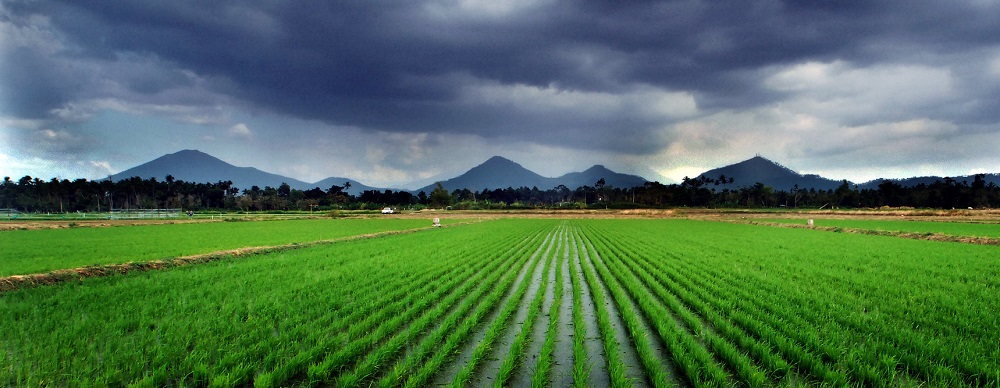As breeders continue to search for ways to improve crop varieties to enable farmers to sustainably produce more grains and contribute to global food security, a team from the University of Illinois and the International Rice Research Institute found a new opening for breeding higher-yielding, water-efficient rice varieties.

.
As breeders continue to search for ways to improve crop varieties to enable farmers to sustainably produce more grains and contribute to global food security, a team from the University of Illinois and the International Rice Research Institute found a new opening for breeding higher-yielding, water-efficient rice varieties.
 The researchers discovered that the panicle or flag leaf of different rice varieties are more efficient in converting light and carbon dioxide into carbohydrates than others.
The researchers discovered that the panicle or flag leaf of different rice varieties are more efficient in converting light and carbon dioxide into carbohydrates than others.
The flag leaf is the final leaf that emerges during crop growth and indicates the beginning of the reproductive phase of rice development when the panicle starts to appear. The flag leaf is particularly important because it produces more than half of the carbohydrates used by the plant for producing rice grains. As such, any damage to the flag leaf could lead to yield loss.
In Variation between rice accessions in photosynthetic induction in flag leaves and underlying mechanisms, the researchers studied six varieties and discovered that the ability of flag leaves to adjust to fluctuating light can vary significantly from one variety to another.
According to the study, the flag leaf of one rice variety could photosynthesize almost twice as fast as the slowest while the flag leaf of another variety could fix 152% more sugar.
The authors also established that the amount of water the plants’ flag leaves exchanged for the carbon dioxide that fuels photosynthesis varied significantly (77%). The water-use efficiency in the flag leaves was associated with water-use efficiency in the early growth of the rice varieties.
These findings could help in accelerating the breeding of rice lines that have more efficient photosynthesis and require less water. The latter is an important trait given the increasing pressures on water resources in many rice-growing regions and the urgent need to create more sustainable agricultural systems, especially in the face of global climate change and a growing global population, according to the researchers.
Read the full study
Acevedo-Siaca L, Coe R, Quick WP, and Long S. (2020) Variation between rice accessions in photosynthetic induction in flag leaves and underlying mechanisms. Journal of Experimental Botany.





